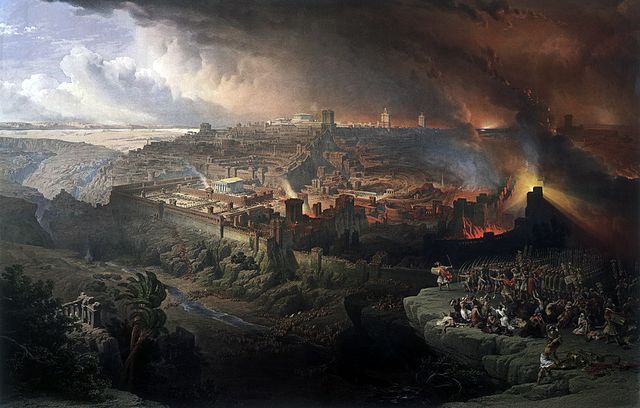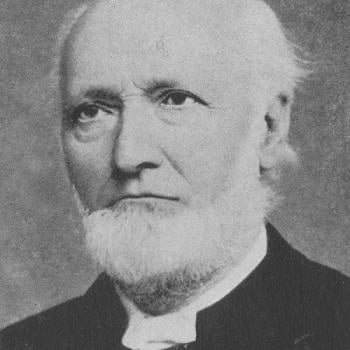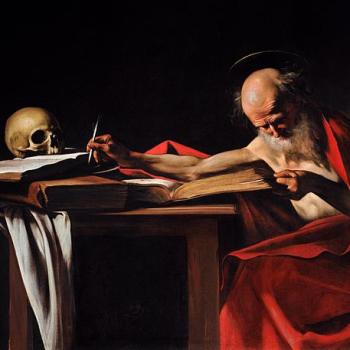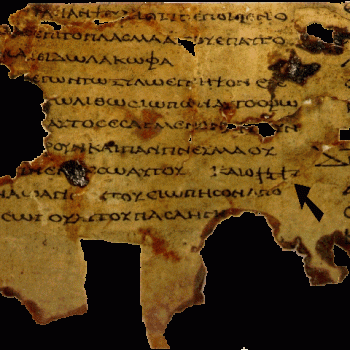
I would like to ask you what is perhaps a very stupid question. Even if it is stupid, though, it has always been a (small) stumbling block for me, and I have never seen it adequately addressed. Here it is:
Most if not all of the writers of the New Testament seem to take it for granted that Jesus’ return and hence the end of the world is coming very soon, certainly within their lifetimes. And it seems very clear that they got this idea from Jesus Himself. Yet they all turned out to be wrong, in a historical sense. My first question is, how does this square with Biblical inerrancy? And a secondary question is, why didn’t the failure of one of the apostles’ main proclamations (“Christ is returning soon!”) discredit all their other claims as well in people’s eyes? How did Christianity survive past the first century?
Many thanks in advance for any light you can shed for me. Love the website!
I don’t think it is a stupid question at all. It is a proper and understandable question, that would occur with a straightforward reading of the NT. The key to understanding the Christian reply is to have a little more background about Hebrew thinking about what is meant by the phrase “last days.” I took on this topic myself with an agnostic: Debate with an Agnostic on the Meaning of “Last Days” and Whether the Author of Hebrews Was a False Prophet.
The International Standard Bible Encyclopedia provides some excellent general commentary on the topic, in its article, “Eschatology of the New Testament” [+ see Part II] (my blue-colored highlighting). It’s very dense and complex reading, but this level of complexity is necessary in order to properly answer the question and proposed dilemma of alleged or possible biblical contradiction.
I. Doctrinal and Religious Significance
The subject of eschatology plays a prominent part in New Testament teaching and religion. Christianity in its very origin bears an eschatological character. It means the appearance of the Messiah and the inauguration of His work; and from the Old Testament point of view these form part of eschatology. It is true in Jewish theology the days of the Messiah were not always included in the eschatological age proper, but often regarded as introductory to it (compare Weber, Judische Theol. 2:371). And in the New Testament also this point of view is to some extent represented, inasmuch as, owing to the appearance of the Messiah and the only partial fulfillment of the prophecies for the present, that which the Old Testament depicted as one synchronous movement is now seen to divide into two stages, namely, the present Messianic age and the consummate state of the future. Even so, however, the New Testament draws the Messianic period into much closer connection with the strictly eschatological process than Judaism. The distinction in Judaism rested on a consciousness of difference in quality between the two stages, the content of the Messianic age being far less spiritually and transcendentally conceived than that of the final state. The New Testament, by spiritualizing the entire Messianic circle of ideas, becomes keenly alive to its affinity to the content of the highest eternal hope, and consequently tends to identify the two, to find the age to come anticipated in the present. In some cases this assumes explicit shape in the belief that great eschatological transactions have already begun to take place, and that believers have already attained to at least partial enjoyment of eschatological privileges. Thus the present kingdom in our Lord’s teaching is one in essence with the final kingdom; according to the discourses in John eternal life is in principle realized here; with Paul there has been a prelude to the last judgment and resurrection in the death and resurrection of Christ, and the life in the Spirit is the first- fruits of the heavenly state to come. The strong sense of this may even express itself in the paradoxical form that the eschatological state has arrived and the one great incision in history has already been made (Hebrews 2:3, 5; 9:11; 10:1; 12:22-24). Still, even where this extreme consciousness is reached, it nowhere supersedes the other more common representation, according to which the present state continues to lie this side of the eschatological crisis, and, while directly leading up to the latter, yet remains to all intents a part of the old age and world-order. Believers live in the “last days,” upon them “the ends of the ages are come,” but “the last day,” “the consummation of the age,” still lies in the future (Matthew 13:39, 40, 49; 24:3; 28:20; John 6:39, 44, 54; 12:48; 1 Corinthians 10:11; 2 Timothy 3:1; Hebrews 1:2; 9:26; James 5:3; 1 Peter 1:5, 20; 2 Peter 3:3; 1 John 2:18; Jude 1:18).
The eschatological interest of early believers was no mere fringe to their religious experience, but the very heart of its inspiration. It expressed and embodied the profound supernaturalism and soteriological character of the New Testament faith. The coming world was not to be the product of natural development but of a Divine interposition arresting the process of history. And the deepest motive of the longing for this world was a conviction of the abnormal character of the present world, a strong sense of sin and evil. This explains why the New Testament doctrine of salvation has grown up to a large extent in the closest interaction with its eschatological teaching. The present experience was interpreted in the light of the future. It is necessary to keep this in mind for a proper appreciation of the generally prevailing hope that the return of the Lord might come in the near future. Apocalyptic calculation had less to do with this than the practical experience that the earnest of the supernatural realities of the life to come was present in the church, and that therefore it seemed unnatural for the full fruition of these to be long delayed. The subsequent receding of this acute eschatological state has something to do with the gradual disappearance of the miraculous phenomena of the apostolic age.
[ . . . ]
Signs Preceding the Parousia:
[ . . . ]
A contradiction is pointed out between the two representations, that the parousia will come suddenly, unexpectedly, and that it will come heralded by these signs. Especially in Mark 13:30, 32 the contradiction is said to be pointed. To this it may be replied that even after the removal of the assumed apocalypse the same twofold representation remains present in what is recognized as genuine discourse of Jesus, namely, in Mark 13:28, 29 as compared with 13:32, 33-37 and other similar admonitions to watchfulness. A real contradiction between 13:30 and 13:32 does not exist. Our Lord could consistently affirm both:
“This generation shall not pass away, until all these things be accomplished,” and “of that day or that hour knoweth no one.” To be sure, the solution should not be sought by understanding “this generation” of the Jewish race or of the human race. It must mean, according to ordinary usage, then living generation. Nor does it help matters to distinguish between the prediction of the parousia within certain wide limits and the denial of knowledge as to the precise day and hour. In point of fact the two statements do not refer to the same matter at all. “That day or that hour” in 13:32 does not have “these things” of 13:30 for its antecedent. Both by the demonstrative pronoun “that” and by “but” it is marked as an absolute self-explanatory conception. It simply signifies as elsewhere the day of the Lord, the day of judgment. Of “these things,” the exact meaning of which phrase must be determined from the foregoing, Jesus declares that they will come to pass within that generation; but concerning the parousia, “that (great) day,” He declares that no one but God knows the time of its occurrence. The correctness of this view is confirmed by the preceding parable, Mark 13:28, 29, where in precisely the same way “these things” and the parousia are distinguished. The question remains how much “these things” (verse 29; Luke 21:31), “all these things” (Matthew 24:33, 24; Mark 13:30), “all things” (Luke 21:32) is intended to cover of what is described in the preceding discourse. The answer will depend on what is there represented as belonging to the precursors of the end, and what as strictly constituting part of the end itself; and on the other question whether Jesus predicts one end with its premonitory signs, or refers to two crises each of which will be heralded by its own series of signs.
. . . eschatological prophecy makes use of ancient traditional imagery and stereotyped formulas, which, precisely because they are fixed and applied to all situations, cannot always bear a literal sense, but must be subject to a certain degree of symbolical and spiritualizing interpretation.
. . . The question is whether this mode of speaking can be explained on the principle of the well-known foreshortening of the perspective of prophecy. It cannot be a priori denied that this peculiarity of prophetic vision may have here characterized also the outlook of Jesus into the future which, as Mark 13:32 shows, was the prophetic outlook of His human nature as distinct from the Divine omniscience. The possibility of misinterpreting this feature and confounding sequence in perspective with chronological succession is in the present case guarded against by the statement that the gospel must first be preached to all the nations (compare Acts 3:19, 25, 26; Romans 11:25; Revelation 6:2) before the end can come, that no one knows the time of the parousia except God, that there must be a period of desolation after the city shall have been destroyed, and that the final coming of Jesus to the people of Israel will be a coming not of judgment, but one in which they shall hail Him as blessed (Matthew 23:38, 39; Luke 13:34, 35), which presupposes an interval to account for this changed attitude (compare Luke 21:24: “until the times of the Gentiles be fulfilled”). It is not necessary to carry the distinction between the two crises joined together here into the question as put by the disciples in Matthew 24:3, as if “when shall these things be?” related to the destruction of the temple exclusively, as the other half of the question speaks of the coming of Jesus and the end of the world. Evidently here not the two events, but the events (complexly considered) and the signs are distinguished. “These things” has its antecedent not exclusively in 24:2, but even more in 23:38, 39.
[ . . . ]
IX. The Consummate State
Side by side with “the future age,” and characterizing it from a less formal point of view, the phrase “kingdom of God” designates the consummate state, as it will exist for believers after the judgment. Jesus, while making the kingdom a present reality, yet continues to speak of it in accordance with its original eschatological usage as “the kingdom” which lies in the future (Matthew 13:43; 25:34; 26:29; Mark 9:47; Luke 12:32; 13:28, 29; 21:31). With Paul the phrase bears preponderatingly an eschatological sense, although occasionally he uses it of the present state of believers (Romans 14: 17; 1 Corinthians 4:20; 6:9, 10; 15:24, 50; Galatians 5:21; Ephesians 5:5; Colossians 1:13; 4:11; 1 Thessalonians 2:12; 2 Thessalonians 1:5; 2 Timothy 4:1, 18). Elsewhere in the New Testament the eschatological use occurs in Hebrews 12:28; James 2:5; 2 Peter 1:11; Revelation 11:15. The idea is universalistic, unpolitical, which does not exclude that certain privileges are spoken of with special reference to Israel. Although the eschatological kingdom differs from the present kingdom largely in the fact that it will receive an external, visible embodiment, yet this does not hinder that even in it the core is constituted by those spiritual realities and relations which make the present kingdom. Still it will have its outward form as the doctrine of the resurrection and the regenerated earth plainly show. Hence, the figures in which Jesus speaks of it, such as eating, drinking, reclining at table, while not to be taken sensually, should not on the other hand be interpreted allegorically, as if they stood for wholly internal spiritual processes: they evidently point to, or at least include, outward states and activities, of which our life in the senses offers some analogy, but on a higher plane of which it is at present impossible to form any concrete conception or to speak otherwise than in figurative language. Equivalent to “the kingdom” is “life.” But, unlike the kingdom, “life” remains in the Synoptics an exclusively eschatological conception. It is objectively conceived: the state of blessedness the saints will exist in; not subjectively as a potency in man or a process of development (Matthew 7:14; 18:8, 9; 19:16, 29; 25:46; Mark 10:30). In John “life” becomes a present state, and in connection with this the idea is subjectivized, it becomes a process of growth and expansion. Points of contact for this in the Synoptics may be found in Matthew 8:22 (Luke 9:60); Luke 15:24; 20:38. When this eschatological life is characterized as aionios, “eternal,” the reference is not exclusively to its eternal duration, but the word has, in addition to this, a qualitative connotation; it describes the kind of life that belongs to the consummate state (compare the use of the adjective with other nouns in this sense: 2 Corinthians 5:1; 2 Timothy 2:10; Hebrews 5:9; 9:12, 15; 2 Peter 1:11, and the unfolding of the content of the idea in 1 Peter 1:4). With Paul “life” has sometimes the same eschatological sense (Romans 2:7; 5:17; Titus 1:2; 3:7), but most often it is conceived as already given in the present state, owing to the close association with the Spirit (Romans 6:11; 7:4, 8, 11; 8:2, 6; Galatians 2:19; 6:8; Ephesians 4:18). In its ultimate analysis the Pauline conception of “life,” as well as that of Jesus, is that of something dependent on communion with God (Matthew 22:32; Mark 12:27 = Luke 20:38; Romans 8:6, 7; Ephesians 4:18). Another Pauline conception associated with the consummate state is that of doxa, “glory.” This glory is everywhere conceived as a reflection of the glory of God, and it is this that to the mind of Paul gives it religious value, not the external radiance in which it may manifest itself as such. Hence, the element of “honor” conjoined to it (Romans 1:23; 2:7; 8:21; 9:23; 1 Corinthians 15:43). It is not confined to the physical sphere (2 Corinthians 3:18; 4:16,17). The outward doxa is prized by Paul as a vehicle of revelation, an exponent of the inward state of acceptance with God. In general Paul conceives of the final state after a highly theocentric fashion (1 Corinthians 15:28); it is the state of immediate vision of and perfect communion with God and Christ; the future life alone can bring the perfected sonship (Romans 6:10; 8:23, 19; compare Luke 20:36; 2 Corinthians 4:4; 5:6, 7, 8; 13:4; Philippians 1:23; Colossians 2:13; 3:3; 1 Thessalonians 4:17).
***
(originally 12-5-08)
***
Photo credit: The Siege and Destruction of Jerusalem by the Romans Under the Command of Titus, A.D. 70 (1850), by David Roberts (1796-1854) [public domain / Wikimedia Commons]
***












